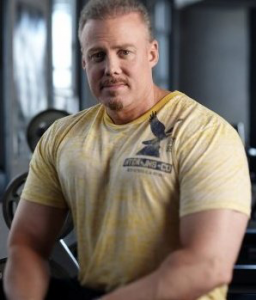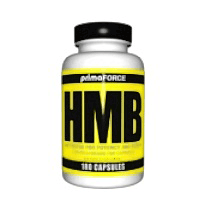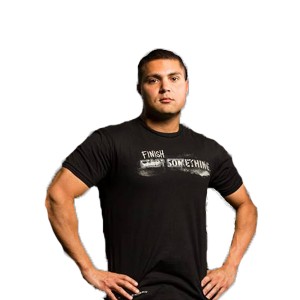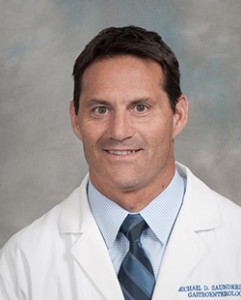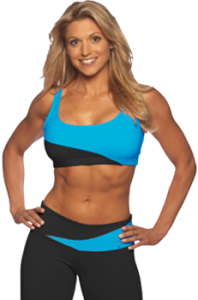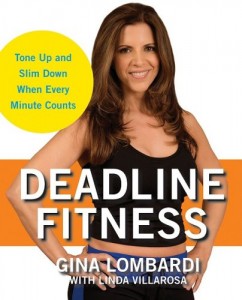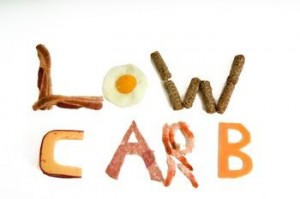 In a sea of mixed-message nutrition and metabolism books, a new text written by two of the leading experts in nutrition and metabolism was recently published. The Art and Science of Low Carbohydrate Living is a scientifically solid, research-supported, passionately written book written by Jeff Volek, PhD, RD and Stephen Phinney, MD, PhD. These two gentlemen have not only achieved their reputations by being book-smart, and by working with clients and patients, they have authored many of the most significant research studies on low-carbohydrate nutrition, metabolism and even exercise performance.
In a sea of mixed-message nutrition and metabolism books, a new text written by two of the leading experts in nutrition and metabolism was recently published. The Art and Science of Low Carbohydrate Living is a scientifically solid, research-supported, passionately written book written by Jeff Volek, PhD, RD and Stephen Phinney, MD, PhD. These two gentlemen have not only achieved their reputations by being book-smart, and by working with clients and patients, they have authored many of the most significant research studies on low-carbohydrate nutrition, metabolism and even exercise performance.
This book leaves little room for opinion or varying interpretations of scientific data. While people frequently share their opinion about low-carb and low-fat nutrition, often based on little understanding of the research on the topic, Phinney and Volek address one misunderstanding after another with a “nothing but the truth” approach. Those who are not well-versed in the research on low-carbohydrate living tend to argue a variety of myths, which the authors tackle one after another. Some of the myths addressed in the book include:
The myth that low-carb diets only result in lost water weight: The truth is that in the first few days that can be the case, but compared against low-fat diets, low-carb diets result in more fat loss.
The myth that low-fat diets have been proven to be more beneficial for heart health: Volek and Phinney address many of the most expensive research studies done on diet and how their study results didn’t show what researchers were hoping for. Low-fat diets, in fact, have not been shown to be more beneficial for heart health than low-carb diets. The authors explain clearly what causes changes in cholesterol levels and triglycerides, making it easy for an average reader or a healthcare professional to understand. No surprise, it is not an issue of eating fat that’s the problem.
The idea that low-carbohydrate diets are not appropriate for performance athletes: Volek and Phinney address this head-on in many of their own research studies, not to mention that Phinney, at 61 is known for cycling more than 2000 miles each year and is an avid mountain hiker, so he’s using his research on himself as well.
The belief that low-carbohydrate diets cause individuals to become tired, lethargic, and fuzzy-headed: In the first-two weeks of dieting, this is often the case as the body becomes more adapted to using fat for primary fuel rather than carbohydrate. Understanding an individual’s physiology and how they respond to such diets allows a health professional to guide them through the first two weeks, where people commonly say they feel better than they have in a long time once they’re through the initial adaptation.
The myth that we must eat lots of carbs for brain function: Phinney and Volek address this by providing and easy to understand lesson in how our body creates the minimal carbohydrate needs it has, and how our body learns to use other fuels once we stop overconsuming carbohydrates.
The exaggeration that getting rid of starches eliminates food groups and leads to nutrient deficiencies: Non-starchy vegetables, our best source of nutrients and fiber are strongly encouraged. Nuts, seeds, meat, dairy, eggs and some fruit are part of the recommended plan. These foods provide high levels of necessary nutrients, as the authors discuss.
The misunderstanding of low-carb diets being only for weight loss: As the authors discuss, low-carbohydrate diets hold promise for other health issues beyond overweight and obesity, including metabolic syndrome, type 2 diabetes, hyper tension, polycystic ovary syndrome (PCOS), gastroesophageal reflux disease (GERD), sleep apnea, high triglycerides, low HDL cholesterol, and certain types of seizures.
Summary
As beneficial as low-carb diets appear to be for people, the authors point out in several areas of the book that it is about low-carbohydrate living, not a low-carbohydrate “diet.” Those who view low-carb as something to use to get the weight off or to control blood chemistry in the short-term, and go back to their old way of eating once they achieve their goals, will find themselves back where they started in a short period of time. To achieve the health benefits the authors describe, individuals should not view their recommendations as a diet, with an end point, but should understand it is a lifestyle. In addition, the authors stress the fact that the benefits of restricting carbohydrates come after about two weeks. Following the plan for two weeks means adhering to it fully for two weeks, not giving in to occasional birthday cake at work or settling for cereal for breakfast because you’re running late to work.
We are faced with so much misinformation and contradiction in nutrition today. The best way to begin weeding through the misinformation is to learn more. Reading the articles on this site and connecting with a fitness professional or registered dietitian at your local Life Time Fitness can be beneficial, but I would also strongly suggest getting a copy of this book. Read a chapter before you go out to eat or do your weekly grocery shopping. It will probably change the choices you make and the foods you buy. Though “low-carb” was once seen as a fad (even though it’s been used for weight management since the 1800s), The Art and Science of Low Carbohydrate Living makes it difficult to see how we could recommend anything else in today’s society, with the high prevalence of overweight and obesity, and the high numbers of nutrition and lifestyle-related diseases.
Review By: Tom Nikkola, CISSN is the Director of Nutrition and Weight Management at Life Time Fitness. In addition to overseeing the program, he also manages nutritional products, which includes 3rd party brands as well as the Life Time brand. Tom graduated from the College of St. Scholastica in Duluth, MN with a degree in pre-med Biology. He has certifications from the American Council on Exercise (Certified Personal Trainer), the National Academy of Sports Medicine (Certified Personal Trainer, Performance Enhancement Specialist), the National Strength and Conditioning Association (Certified Strength and Conditioning Coach), and the International Society of Sports Nutrition (Certified Sports Nutritionist). Tom has been with Life Time since 2001. For more articles by Tom Nikkola, go to www.lifetime-weightloss.com/blog.
